Get social media right or "you're stuffed"


Every time you use something that you aren't being charged for, remind yourself, it's because you are the product. SMH.com.au, LinkedIn, Facebook, Pinterest all let you read and/or post for free because they are making money out of YOU. Businesses of all kinds are constantly gathering data from you and about you and your contacts most of the time you do something digitally. Facebook can now access your phone’s microphone to eavesdrop on what you are listening/watching while you post an update.
The upside is you will be served ads or content or search results that have been vetted just for you. The downside if you're marketing your own business online is you have to recognise the average person will increasingly expect to receive only what they care about.
Social marketing 101: What's in it for your customer?
As Jane Caro told a room full of online marketers recently, people are "entirely able to screen you out no matter how much money you put behind (your message.)
“If the message is not relevant, if the message doesn’t mean anything to them, you’re stuffed.
“the power has moved from those people with large pockets to the population at large. But you can have no money at all and send a Tweet that resonates and takes off like wildfire and suddenly you’re famous.”
Research by McKinseys has shown businesses have found the primary benefit of embracing social media is the ability to open a dialogue with customers and actually listen to what customers want. Not talk at them like a brochure, but understand what they care about and respond, or learn and move on. Here's a reminder of the simple etiquette of doing a business on the Itnerweb.
3 rules of social media engagement: the 3 Rs
To participate in social media as a representative of an organistion or company it is important to remember 3 rules.
Be clear about who you are representing, take personal responsibility for ensuring that any references to your company are factually correct and accurate and do not breach confidentiality requirements, and show respect for the individuals and communities with which you interact.
Remember, you are personally responsible for the content of the posts online. If employing a ghost writer, it is your responsibility to sign off on final content. Ensure any information about your products and services that you provide is true and factually accurate.
Respect copyright, privacy, financial disclosure and other applicable laws when publishing on social media platforms.
If you break the law you may also be personally liable.
Read MoreThere is no best way to compete


Remember that scene with Steve Martin ordering coffee L.A. style – "a half double decaf decaffeinated half caf... with a twist of lemon." (The video is at the end for you to enjoy.) It seems every single decision we now make throughout the day comes with an endless number of choices.
So it came as no surprise when a global a marketing guru presented research to the World Business Forum in Sydney that proves, in industry after industry, there is no single best way to compete.
How to differentiate your brand today
The worst mistake in strategy is to compete with rivals on the same dimensions, Professor Michael Porter says. The man who’s made strategy his life work says many businesses still get confused around the definition of the concept of differentiation, and that even trying to be ‘the best’ means a business is starting in the wrong place strategically.
Porter points out "we all know it’s impossible to meet every need of every customer uniquely well. That’s impossible. There’s no one way to deliver value.
“Strategy starts with a notion that the fundamental question is not how to be the best, it’s actually how to deliver something unique. To the customers you’re choosing to serve. Not because what you’re doing is ‘the best’ but because what you’re doing is delivering distinctive value.
Strategy is about being unique. That’s ultimately what all successful companies are able to achieve for some period of time."
The formula for growing challenger brands
If today we are spoiled for choice, it follows the prospective customers for our business are too. So instead of seeking some magic wand global answer, a better strategy is to identify one thing people you're trying to serve actually care about. Something that you're good at delivering. Finding your mojo is the fundamental starting point in our formula for growing challenger brands.
Read More
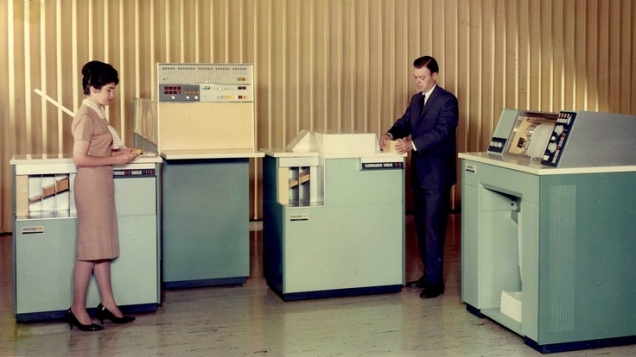
The head of marketing will soon be spending more on IT than the head of IT, so a recent study by Gartner found. Last week at the annual adfest in Cannes, Ogilvy's top creative warned of how too much faith was being put into data and not enough into ideas. This was resulting in well planned and placed ads that don't actually achieve much.
Where is the real value to be found in marketing?
The more things change the more they stay the same. The problem in the past was IT managers spent a fortune, first on hardware and then software to sytemise the running of the business. Whether or not the customers' experience was improved was not the concern of the CIO. You only had to dial 3 for support to know that. The main focus of the CIO was all about having bragging rights his IT budget was bigger than the competitors'.
Now we are seeing marketing managers playing the same game, "my Big Data budget is bigger than yours." Businesses are paying more and more to collect big brother levels of information on people. You've experienced the result like everyone else – being hit with ads on Facebook when all you want to do is see a picture of a friend's fishing trip. This may be how Zuckerberg will try to make an earn for shareholders, it isn't the road to marketing Nirvana. Just like the IT managers of the past, what the customer wants once again isn't the focus.
The constant here is managers within the business concentrating on the business of the business, rather than looking for ways to make a customer's life better. You probably recognise the trap, I fell for it. For several years I paid too much time and money on experienced professional staff and IT consultants to implement and manage programs to systemise my business. None of it added to the power of connecting and motivating, inspiring or creating. It was money spent on smooth bureaucracy for neatness sake and failed to grow my customers' businesses, nor consequently my own.
Rational Vs emotional marketing approach
"Investment" in IT has always been a rational spreadsheet sell to the chief decision maker. How often have you witnessed a marketing department asking for a "brand building" budget lose out to the CIO who could promise a guaranteed ROI from some new IT? Problem is marketers seem to be giving up the fight at the board level for using emotion to connect with customers, instead choosing the easy route of asking for funding for data. Spend X get Y. Yet economic modelling consistently shows the customer is innately irrational, human beings are pre-programmed that way. This is at the heart of getting the best marketing ROI.
Your customers are more emotional when making purchase decisions than rational
The influential role of emotion in consumer behavior is well documented, here is a summary by Antonio Damasio, professor of neuroscience at the University of Southern California –
- MRI neuro-imagery shows that when evaluating brands, consumers primarily use emotions (personal feelings and experiences) rather than information (brand attributes, features, and facts).
- Advertising research reveals that emotional response to an ad has far greater influence on a consumer’s reported intent to buy a product than does the ad’s content – by a factor of 3-to-1 for television commercials and 2-to-1 for print ads.
- Research conducted by the Advertising Research Foundation concluded that the emotion of “likeability” is the measure most predictive of whether an advertisement will increase a brand’s sales.
- Studies show that positive emotions toward a brand have far greater influence on consumer loyalty than trust and other judgments which are based on a brand’s attributes.
So it follows a business that concentrates on chasing efficiency by spending big on data risks failing to connect on the more powerful emotional level.
Challenger brands care most about what the customer thinks matters most
Challenger brands that actually care about what customers want are winning by using the Cloud to remove superfluous steps from the delivery of products and services, often without big IT budgets. One example I know intimately is an Australian first, UNOsmsf, Cloud based Self Managed Super.
The rational customer benefit: More choice, more control, lower fees. We'll be using an emotional truth to appeal to prospective clients: your fund can do better than your mates with more money who are paying through the nose for an average product the big banks want to sell them using big data.
Check out the superannuation challenger brand taking on the banks from the Cloud.
Read More
Top 5 biz management blunders


Have you read any of Robert Gottliebsen's recent articles on the impending 12 billion dollar plane crash coming our way? Australia's purchase of three squadrons of Joint Strike Fighters – 58 at over $100million each is a fine example of the 5 management blunders many businesses tend to make.
5 blunders for management to avoid (& tips on marketing)
Gottliebsen quoted Liberal senator Jensen, a scientist, explaining what a blunder the decision to purchase the JSF is proving to be. Here I paraphrase Robert, with my own warnings on the blunders to avoid when making decisions about marketing::
Rule 1 of management blunders
Ignore expert advice and go with your gut. A decade ago Australia's manager at the top, John Howard, ignored the advice of aviation experts and bought into the development of the JSF. In my experience, being told the CEO doesn't believe in marketing or paying for external advice is more common than finding a boss willing to admit where their expertise ends.
Rule 2 of management blunders
When you make a big decision, those who continue to oppose you need to be pushed aside -- everyone must get with the program. Creativity is stifled by group think, yet it's creative thinking that helps businesses compete on their own terms, rather than taking the category head on.
Rule 3 of management blunders
All staff involved in the decision are ‘looked after’. E.g. In the case of the JSF, Senator Jensen has studied carefully what happened and says "there are too many who get jobs with contractors where they have provided advice favouring that contractor's product.” Advertising is renowned for managers procuring from friends who are designers, family members who know photoshop and printers who give them tickets to the rugby.
Rule 4 of management blunders
Delay as long as possible in telling the people at the top that the decision is wrong. In corporations, big, sudden write-downs are often caused because management down the line keeps putting a good spin on the data to keep their jobs, until finally they have to confess. Or in my experience, they are found out long after they've moved on. One CEO didn't realise that for two years none of my proposals to fix their problems had ever been passed up to him by his marketing manager. It was only after firing the manager he discovered an email trail where my strategies and estimates had been constantly forwarded to her close friend, who was then being commissioned for services beyond their capability at far higher prices.
Rule number five
Obscure the costs with all sorts of creative accounting. In marketing and advertising, this is really easy when so many managers claim to know the cost of everything, when they actually don't understand the value of anything.
The common theme here is the tendency of management to throw staff at problems, at great long term cost, when trusting experts would be better for business.
Read More
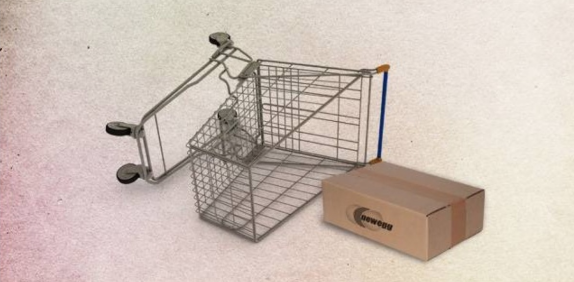
The idea that online retail is about discounts isn't in line with the facts. While margins might be tighter, e-commerce is no longer just about bargains and end-of-line clearances. The latest NAB Online Retail Sales Index shows just how broad Australian retailing has become. Daily Deals sites are stuck at 3% share. The biggest online sales growth stories now are in liquor and groceries.
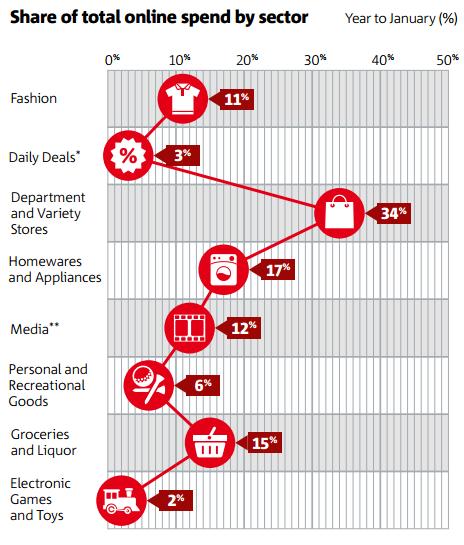
Department stores and appliance retailers the big winners, or losers online?
The mainstreaming of e-commerce can be seen in the leadership of department store products with a whopping one third of online spending. Once slow to adopt, Myer now offers 119,000 individual products online.
Domestic operators still have the lion’s share of online sales at around 75%. Gerry Harvey’s call for a GST on foreign online sales is just noise when you consider he mostly sells homewares and appliances, the second largest online category. I don’t see Australia Post delivering washing machines bought from Best Buy New York via their online store as a threat to Gerry. The threat is internal, his stores are failing to add value to the sales process and Harvey Norman still doesn't appear to have a strategy to compete with local online challengers.
Challenger brands have an advantage online
If anything, e-commerce puts the power back into the hands of customers who want to deal direct with manufacturers. Australian challenger brands, when they make a product that locals actually want, can cut out the blood sucking Coles/Woollies duopoly and the Gerry Harvey’s.
When brands reinvest into marketing a portion of the retailer margins that going online cuts from the delivery chain, they can grow share long term. This way e-commerce becomes a WIN, WIN equation for brand and customer.
An example of this approach is the transformation of a traditional Australian designer manufacturer of compression and sportswear – Quick Response. UNO has helped them transform from a wholesaler at the mercy of retailers to a direct-to-consumer e-business. This challenger brand is now competing with SKINS, (the retail market leader with a high priced foreign made product), by offering superior Australian made garments direct online, at a better price. Check out the QRS compression online store.
The future for online retail marketing
While retail sales generally have been mostly flat, ABS figures show Australian’s spent 27% more online in the year to March than the year before.
The NAB online spend index doesn’t include online shopping paid for by Paypal, transfers or EFTPOS, so the 6.5% of all retail spending measured in the latest report to March 2014 is an underestimate of the reality. Marketers need to view online retail as a growing opportunity for current business growth, not just a nice to have in the future.
Source: National Australia Bank Online Retail Sales Index.
Read MoreTruth in advertising?

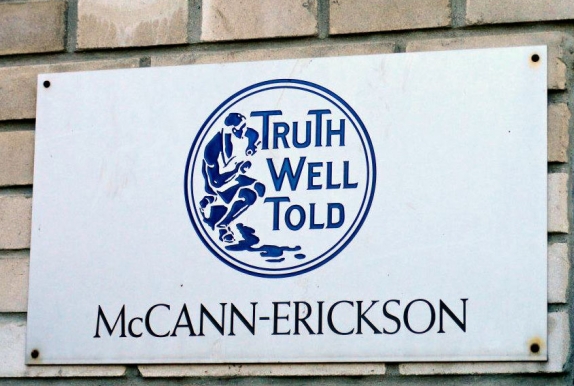
Which professions are most trusted in 2014? Research shows the Australian public rate nurses 91% for ethics and honesty, once again at the top, whereas most professions don't rank well in the trust stakes at all.
No prizes for guessing who rates last at 3%, it's the same profession that has been at the bottom every year since Roy Morgan began their annual "Image of Professions" survey in 1986.
2014 rankings of professions for ethics and honesty
- Nurses
- Pharmacists
- Doctors
- High Court Judges
- Dentists
- School teachers
- Engineers
- Police
- Supreme Court Judges
- University lecturers
- Accountants
- Bank managers
- Lawyers
- Ministers of religion
- Public servants
- Public opinion pollsters
- Financial planners
- Directors of public companies
- TV reporters
- Newspaper journalists
- Business executives
- Insurance brokers
- Stock brokers
- Talk-back radio hosts
- State MPs
- Federal MPs
- Union leaders
- Real estate agents
- Advertising people
- Car salesmen
Source: Roy Morgan annual 'Image of Professions' survey for 2014
Read MoreSince the GFC businesses and investors have struggled to find consistent ways to achieve double digit returns. You can continue to blame the shake out that the credit crunch brought down on our heads, or perhaps the current tough environment is the new normal. The new normal is a world where businesses and governments and media proprietors no longer have control. Everything has been digitised, and thanks to Google and global Internet access from mobile phones at low prices the slevers are now controlled by the public, your customers.
The last decade has seen what Deloitte term the era of Digital Disruption. In a paper last year they identified which Australian industries are facing a short fuse, big bang trashing of their business models. Traditional business models that could control supply and demand and charge a premium have dissappeared or in the case of Delloittes hit list of financial services and are about to.
The businesses that prosper will be those that can embrace the new digital normal. It is the business managers that apply design thinking to their entire way of operating that will survive. The good news for SMEs is they have eless to lose than corporations and also have the management structure to embrace change. The best thing about all this si design thinking makes more money for a business than traditional management approaches. Here are some figures on just how much more profitable design centric businesses have been since the GFC.
Design Thinking has doubled the returns of companies across a range of industries
The Design Management Institute in the US worked together with Motiv Strategies to create a share market index for tracking the returns of businesses that have Design Thinking at the centre of the organisation. Called the Design Value Index, it shows the 15 rigorously-selected companies that understand the value of design beat the S&P Index by a whopping 228% over the last 10 years.
Who are these profit powerhouse businesses and what do they have in common?
Design is an integrated function across the entire enterprise; they invest in design and it shapes the way employees interact and report, management structure is flat or receptive to ideas; experienced design executives are given power to direct design activities; and there is a senior leadership-level commitment to design. Some of the companies on the list won’t surprise you – Apple, Coca-Cola, Walt Disney and Nike. Others might – Ford, Herman-Miller, IBM, Intuit, Newell-Rubbermaid, Procter & Gamble, Starbucks, Starwood, Steelcase, Target and Whirlpool.
Designers are lateral thinkers, utilise their creative leaps
The way designers think is much more open to ideas, random thoughts from diverse sources and then building on these. By starting with the question what does a customer want and what makes them happy the designer is liberating from current accepted practices within a business. They challenge all aspects, collaborating across all the people in a business from sales to complaints, production to procurement. Compare this to control and command structures, like the public service where you aren’t allowed to ask a superior a question let alone challenge what they believe is the way it’s always been done.
Change, rather than wait to be redundant. As Deloitte warns, redundancy is coming sooner rather than later.
Read More
Since the GFC businesses and investors have struggled to find consistent ways to achieve double digit returns. You can continue to blame the shakeout that the credit crunch brought down on our heads, or accept that the current tough environment is the new normal. We now have to operate in a world where businesses and governments and media proprietors no longer have control. Everything has been digitised.
Thanks to Google the information levers are now controlled by the public. In other words, your customers now call the shots.
to Google the information levers are now controlled by the public. In other words, your customers now call the shots.
The last decade has seen what Deloitte term the era of Digital Disruption. In a paper last year they identified which Australian industries are facing a short fuse, big bang trashing of business models. Traditional business management techniques that could control supply and demand and charge a premium have disappeared. You can see from Deloitte's hit list, even industries not used to rapid change like financial services and arts and recreation are about to face significant disruption.
Deloitte's Digital Disruption map
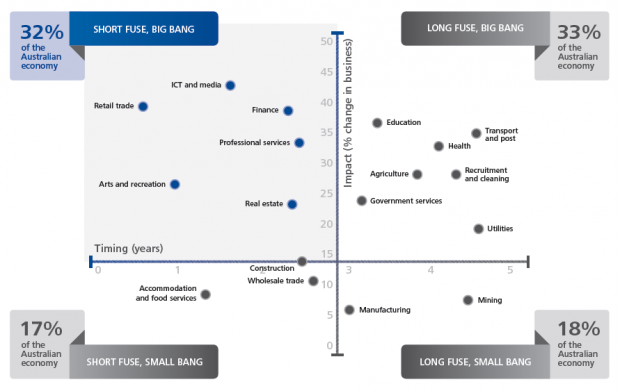
The formula for small & medium business survival in this time of disruption
The businesses that prosper next year and beyond will be those that can embrace the new digital normal. It will be the business managers who apply design thinking to their entire way of operating that will survive. The good news for SMEs is they have less to lose than corporations and more flexibility in the management structure to embrace change.
SMEs are perfectly placed to become tomorrow's challenger brands. The best thing about all this is design thinking makes more money for a business than traditional management approaches. Here is a chart that shows just how much more profitable design-centric businesses have been since the GFC.
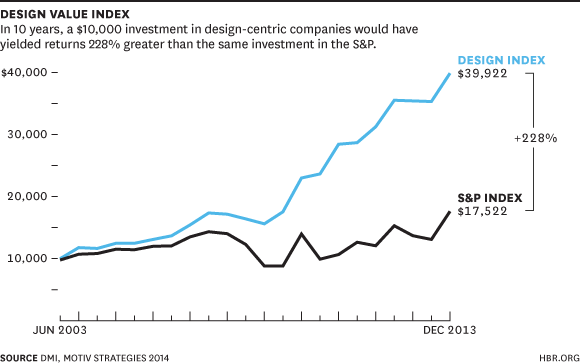
Design Thinking has doubled the returns of companies across a range of industries
The Design Management Institute in the US worked together with Motiv Strategies to create a share market index for tracking the returns of businesses that have Design Thinking at the centre of the organisation. Called the Design Value Index, it shows the 15 rigorously-selected companies that understand the value of design beat the S&P Index by a whopping 228% over the last 10 years.
Who are these profit powerhouse businesses and what do they have in common?
Design is an integrated function across the entire enterprise; they invest in design and it shapes the way employees interact and report, management structure is flat or receptive to ideas; experienced design executives are given power to direct design activities; and there is a senior leadership-level commitment to design. Some of the companies on the list won’t surprise you – Apple, Coca-Cola, Walt Disney and Nike. Others might – Ford, Herman-Miller, IBM, Intuit, Newell-Rubbermaid, Procter & Gamble, Starbucks, Starwood, Steelcase, Target and Whirlpool.
Designers are lateral thinkers, utilise their creative leaps
The way designers think is much more open to ideas, random thoughts from diverse sources and then building on these. By starting with the question what does a customer want and what makes them happy the designer is liberating from current accepted practices within a business. They challenge all aspects, collaborating across all the people in a business from sales to complaints, production to procurement. Compare this to control and command structures, like the public service where you aren’t allowed to ask a superior a question let alone challenge what they believe is the way it’s always been done.
Change, rather than wait to be redundant. As Deloitte warns, a big bang of disruption is coming sooner rather than later for most businesses.
Read MoreHow do you lead your business in the Digital Age?
The answer is in the mail. Australia Post is over 204 years old, but that hasn’t stopped it making the most of the digitised world. At a presentation to business leaders at the AGSM Leading The Digital Enterprise event yesterday, I found Tracey Gosling, a director of Australia Post, the biggest surprise. While the usual suspects, like the Head of Policy at Facebook and an author on Innovation helped open the eyes of the bank managers and bureaucrats in the room to the way generation X and Y want to be treated at work, it was the true stories of change at Australia Post I found most useful.
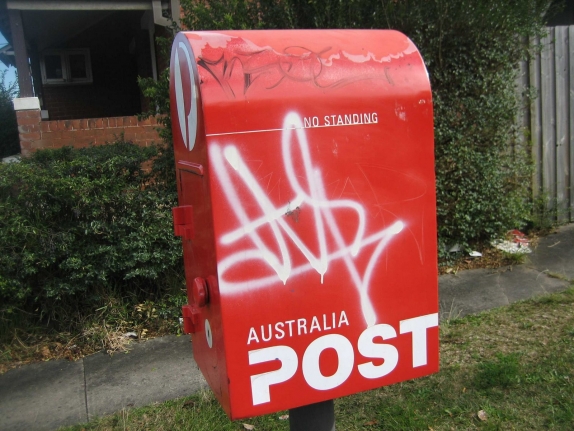
What's the future for AusPost in a digitised world?
Tracey shared real examples of the often simple ways ordinary people in their business have made changes that have worked. They show us what can actually be achieved when the starting point is very grim. Which gives real hope for small and medium sized businesses that aren't as tied down by the inertia of a monopoly like AusPost.
Tracey painted a picture of a vast post office workforce laboring under the emotional burden of the fear of change. Imagine you were a postie, one of my schoolmates from 30 years ago still is. Imagine over the last decade the postie doing the daily rounds would feel the bag of mail on their back was lighter than the week before. And next week it will be lighter still as people stop posting letters. They'd be worrying when will the day come there is no mail to deliver and they're out of a job?
To survive Australia Post has to manage a bigger change to the way customers exchange information than past revolutions like telegraph to telephone, horse borne deliveries to airmail, phone to fax. The Internet has changed everything more significantly than any of those innovations. Manage the change they have.
To quote the Australia Post annual report: “For the 13th consecutive year, we met or exceeded all of the performance standards that relate to our community service obligations. We delivered 95.5 per cent of domestic letters on time or early (against our 94 per cent target) and we increased the number of postal outlets to 4,429 nationwide. Total revenue grew to $5.9 billion and our after-tax profit increased by 10.9 per cent to $311.9 million. This means net profit has grown 21 per cent per annum since we enacted our Future Ready transformation program."
What has AusPost changed to keep up? Nearly everything, they had to. Last year they lost $189 million on mail delivery. AusPost now makes more from servicing e-commerce businesses and other activities that didn’t exist just a decade ago. There are secure 24/7 Parcel Lockers within minutes drive of most homes for out of hours parcel deliveries, digital self serve kiosks in post shops and soon digital I.D. recognition software that will mean documents like banking applications and contracts won’t need signatures by hand.
If a bureaucracy can go digital, so can your business
These changes to a huge and diverse business are making sure it can remain competitive as digitisation changes the world. As with most things in business, change management is being enabled at Auspost from the top. CEO Ahmed Fahour is a case study in the new style of management required for the digital age – leadership by openness, not power. This infographic sums it up nicely.
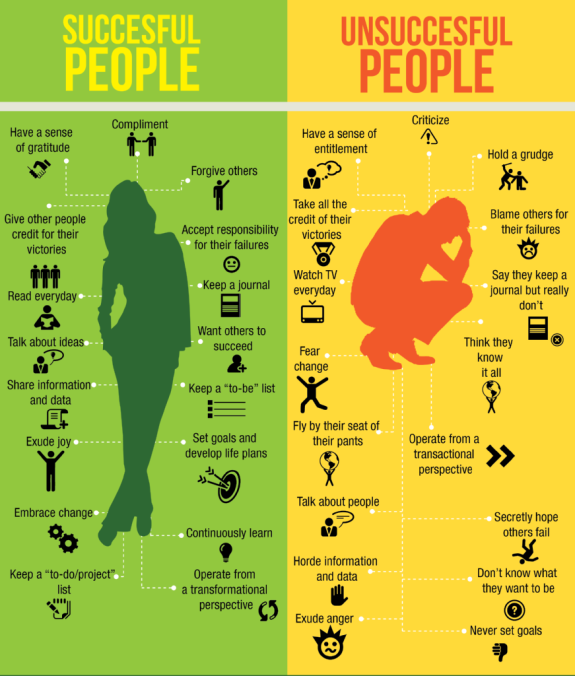
View this image on Pinterest.
Here are some examples of how Ahmed Fahour has let go of control:
1. Let staff fail
Individuals in offices can change their methods behind the counter to see if it works better than current processes without asking prior permission from senior management. If it doesn’t work, no great loss. If it does make an improvement, it’s shared across the organisation.
2. Social media is for everyone
While most government departments still don’t allow social media or even Google to be used in the office, Fahour has let employees at every level of share an opinion on Facebook. Just a few years before only 2 people were officially given the role to manage social media, yet even then there were 15,000 conversations happening on social media each year amongst staff.
Businesses need to recognise they can’t control what staff want, or constantly roadblock how they want to do it. Indeed today, in the words of former Cisco Senior Director Martin Stewart-Weeks, "a network routes around an obstacle." It's the same with staff, they will go around you, or leave.
3. What does the customer want that they’re not getting?
To improve the way they can fulfill for e-commerce customers, staff who had never shopped online were encouraged to do so in work hours. This led to an understanding at many levels of post employee of what online businesses do well and not so well, and discover what shoppers want from the whole order to delivery process. One consequent innovation is the 24/7 Parcel Locker, which means you don’t have to be at home to receive a valuable e-purchase.
4. What can you do that’s new?
Things are changing fast, so what you’ve always sold in the past is less likely to be as attractive to new customers tomorrow. Again, take inspiration from the top postie:
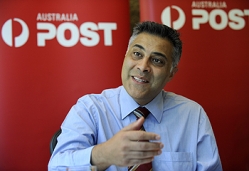 “We capitalised on the boom in online shopping with the Parcel & Express Services segment earning profit of $354.8 million, on the back of 9.3 per cent growth in domestic parcel volumes. And, despite difficult retailing conditions, Retail Services profit again grew to $200.6 million, mainly through adding new financial and identity services.”
“We capitalised on the boom in online shopping with the Parcel & Express Services segment earning profit of $354.8 million, on the back of 9.3 per cent growth in domestic parcel volumes. And, despite difficult retailing conditions, Retail Services profit again grew to $200.6 million, mainly through adding new financial and identity services.”
“Initiatives are all focused on capturing our immediate customer growth opportunities in the digital economy – especially in e-commerce, digital communications and trusted services.”
We are constantly exploring the new possibilities with our clients, it's how we help to keep them growing as successful challenger brands.
Read More
 Making meaningful comparisons as a consumer is challenging, especially with superannuation. Christopher Zinn says we need to understand how to make informed choices when incumbent businesses operate in a "confuscopoly".
Making meaningful comparisons as a consumer is challenging, especially with superannuation. Christopher Zinn says we need to understand how to make informed choices when incumbent businesses operate in a "confuscopoly".
It is a big ‘what if’ because too many businesses profit from the lack of determination of their customers for better products, services and even prices.The public’s desire for improvement is dulled by a widespread disengagement, resignation and inertia that anything they do may actually be much better for them.
And the consumer malaise seems worse in those markets which really count most because of the sums involved: superannuation, health and other insurances, energy such as electricity and telecommunications.
The symptoms are a lack of switching to better offers, which tends to benefit the incumbent above the challenger brand, and even paying over the odds by sticking with the wrong plan and perhaps the wrong provider.
The figures are sobering. The Australian Communications and Media Authority says poor plan choice around telecoms has cost consumers a probably under-estimated $1.5 billion a year.
Superannuation is confusing for customers
The ATO holds more than $18 billion in lost superannuation accounts. And despite more than 11 million Australians are covered by private health insurance less than 40,000 of them switch each year.
The fault is not solely the consumers. The ‘confusopoly’ of the mobile phone market in particular makes meaningful comparisons more than challenging.
Our cognitive biases, which make us particularly vulnerable to decisions around money and cause us to favour the present as opposed to the future, do not serve us well when it comes to assessing strategies around retirement savings.
And the complex and changing rules around health cover and premium rebates tend to drive policy-holders to sit pretty instead of seeking better value.
Of course some consumers are determined and realise a little time and effort in acquiring knowledge of these markets can save significant pain and expense.
But there’s a limit to even their patience and how much effort is worth it for how little a reward. There’s also the issue of expertise and the imbalance of information: as consumers we are amateurs buying from professionals.
We may only purchase a new car every few years, but the sales staff sell them every day, and however canny you are they will always know more about the vehicle, its true value and how to upsell you on various unnecessary warranties.
One way to correct this asymmetry, as it’s sometimes called, is to gather like-minded consumers together and use their numbers as leverage in negotiating better terms.
It’s already happening in specific markets such as energy and insurance as One Big Switch, with whom I used to be director of campaigns, has demonstrated here and overseas.
Another way is selectively reforming markets by regulation. In Australia conflicts of interest with financial planners led to the Future of Financial Advice (FoFA) legislation.
The government is seeking to severely dilute these much needed consumer protections, claiming they are somehow excess ‘red-tape’. In fact they represent a much-needed shark-proof cage for consumers to more safely navigate financial waters.
In the US and UK regulation is helping liberate consumers’ usage data from the back offices of utilities and banks so citizens can employ trusted third parties to crunch the numbers and help them make better decisions.
The determined consumer can take back control
Being determined as a consumer is not just a state of mind, although that helps. In the future it will require the technologies which can bring us together quickly and cheaply to use some people power in markets.
It will also require more consumers to get hold of their own data and then find emerging intermediaries to help them make real sense of the complexity and choice fatigue which bedevils too many markets.
Determined consumers do not need to be told to shop around or read the fine print. They already know that, but they do need help in turning their determination into better decisions.
Christopher Zinn is an independent consumer advocate currently running a campaign to highlight the financial advice protections (www.saveourfofa.com.au). His other initiative is www.determinedconsumer.com.au which is aimed at motivating consumer action. UNO worked with Chris on consumer empowering programmes at CHOICE. He also co-founded One Big Switch as well as being a repoorter/producer at the ABC, Channel Nine and several newspapers.
Read More$2M+ of lies to win power

I believe in truth in advertising. So does the commercial TV regulator that demands evidence for any claim you want to make before they give your ad clearance to air. Unfortunately for the voters of NSW, political parties are allowed to say what they want in an ad because they aren't answerable to any of the rules mere brands and businesses have to conform to.
If I made a fraudulent claim for a client in an ad, (for instance the kind of price saving offer mobile phone plans were notorious for before being fined into transparent pricing), the ACCC or ASIC would come after me. This election has seen Labor and unions spend twice the Liberals. Most of that $2,500,000 was on ads that say electricity prices will go up if Baird sells 49% of the poles and wires. It's a lie.
Their ads scream this lie despite ACCC chairman Rod Simms saying this isn't the case. Even the Australian Energy regulator is on record that whoever owns the poles and wires in NSW after the election he will insist they reduce their prices by 20-30% over the next five years. There is no evidence for the claim made in Labor's ads that I believe would have satisfied the broadcast standards that commercial advertisers have to comply with. In fact, there is much historic evidence from previous power privatisations showing prices are lower outside government ownership. This has been acknowledged by such Labor luminaries as Bob Carr, Morris Iemma, Michael Costa and Anna Bligh when they attempted to sell the poles and wires under their governments.
It frustrates me as a professional marketer that in the 21st century political parties of any persuasion can play 1984 mind games with the truth and run them in prime time. The ABC Fact Check merely called Foley's ad pitch "spin". I prefer the robust language of former Labor Energy Minister and ACTU president Martin Ferguson. He says Foley's spin is "rank opportunism and scaremongering... sending a clear message he doesn't care about jobs and energy security."
Politicians' ad claims are officially accountable to... themselves
Here is the law (or lack of) that applies to political advertising as published by adstandards:
"Currently, there is no legal requirement for the content of political advertising to be factually correct. Complainants are advised to raise their concerns with the advertiser directly and/or with their local Member of Parliament."
Maybe we should just ban political advertising, we banned cigarette ads for telling us porkies.
Read MoreThe optimum lengths of social media
People now have short attention spans. So to connect you have to cut through. Keep it honest. Keep it simple. And keep it true to your brand. As for length, keep it short.
71 - 100 characters
Posts with 40 characters get 86% more engagement
Google+
25 characters
40 characters
Linked In
Posts 16 to 25 words long
Videos
Average length watched is 2.7 minutes
Read MoreThe average customer has an attention span of


How does a brand catch a customer's interest when their attention span is now less than that of a goldfish? I spent a few seconds Googling to discover the average person's attention span has shrunk since 1998, by 11 minutes.
The average attention span today is 8 seconds
The National Center for Biotechnology Information says our attention span is now 1 second less than goldfish. What hope does a brand have to convince us to buy?
Consider a tube of toothpaste. The average main grocery buyer now spends less than 20 minutes in the supermarket for the big weekly shop. With over 10,000 items to choose from it's not surprising when faced with so many options brands are struggling to catch shoppers' interest. At the dental care section 27% of shoppers walk away without making a decision.
You may be aware Australians have never been better educated, the number of university graduates has almost quadrupled since 1986, from 6% to more than 21%. Are we any smarter or better prepared to make purchase decisions?
We are exposed to five times the quantity of information every day than we received 30 years ago, (you may be surprised just how many ads we are exposed to). Yet we have less free time to consider. The Economist explains that time poverty is a wealth syndrome, the more money we have the more we value our time and the more choices we are confronted with to spend that time. At the other extreme, cash strapped people have largely given up trying to decipher so much information, they are influenced by price like never before.
Price is increasingly winning over brand appeal. It's at the heart of the growing success of ALDI – less items to choose from, mostly unbranded, all at lower prices. This has seen their share of grocery sales reach 10%, a big slice of the market brands are mostly missing.
Even brands are struggling to be seen in Woolworths
According to Woolworths own research "more than a third of the items in Woolworths’ supermarket trolleys are purchased on promotion." That's an increase of 10% a year for the last two years.
"Australians hunting for bargains are the big winners, with one in four customers (25%) purchasing nearly half of the food and drinks in their trolley on special."
How do the retailers manipulate the time poor if not with price?
One journalist recently warned shoppers something brand marketers pay dearly for:
- The most expensive brands, or the ones being promoted heavily, will always be on the two shelves that sit between waist and shoulder height.
- Cheaper products are often stocked below knee height.
- Supermarkets know that you may only want milk so put it at the back of the store in the hope you’ll pick up items you don’t need.
Not only are the retailers asking brands for price rebates, Private Label substitutes are also catching once impregnable brands in a pincer movement. So if you believe in protecting the value of your brand you'll probably want to avoid discounting too often. Only the biggest and most desperate can afford to pay Coles and Woolies to be on promotion. In the past sales managers have encouraged the benefits of putting products on promotion to drive sales. Does it still work in the era of short attention spans?
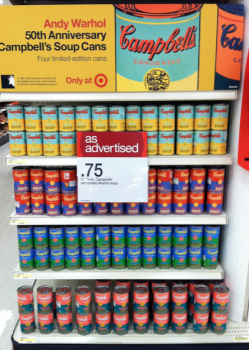
My associates at consumer benchmarking specialists B4P spent a year researching the impact of sales promotions at Point of Purchase (POP). The clients were several of the largest global FMCG companies that are active promoters in Australia's supermarkets, every week of the year. They tested awareness before promotion, cut through in-store, trial, impact on sales and recall several weeks later.
Across all promotion types, (price promotion, competitions, bundled offers and bonuses), shoppers generally don't notice any of it. This is despite multi-million dollar spends on displays, cardboard, posters, banners, gondola ends and shelf strips. Most in-store promotions have become invisible.
Earned and shared media can still gain attention
As we learned over seven years growing Pacific West from a $6million pa frozen seafood minnow to a $38million challenger brand, you can drive shoppers to your product by creating original content to tell your story and social media to spread the word. Just remember your audience has a short attention span. Here is a charming infographic that shows the optimum number of times to post content on social media channels.

Read More
Think big, or detail will kill your business


"Look, I said I'd bring you the report on micromanagement,
just give me a minute!"
Stop sweating the small stuff, especially now there's so much of it. New technologies allow us to gather data on just about everything. So it's become accepted practice for marketers and sales to invest in new ways to gather stats and report to senior management. For those of you wondering what's the point, it has now been proven the more a business spends on technology, CRM systems and sales data, the less well it performs in profitable conversions.
The more technology marketers use, the worse the results
Sounds like a contradiction, but the research undertaken by Peter Strohkorb into sales and marketing collaboration in 2013/4, simply proves the more systems teams add the worse the sales results. It's symptomatic of what the authors of Blue Ocean Strategy postulated over a decade ago. A typical strategic plan is usually based on a plethora of research from silos across the business which forces management to dwell on detail. Management becomes paralyzed by information overload.
The businesses that thrive are the ones that step back and look at the big picture using a customer centric view of what could be possible. Here's how it works.
Focus on the big picture to create a Blue Ocean Strategy
| Head to head competition | Blue Ocean creation | ||
| Industry | Focus on rivals within industry | Looks across alternative industries | |
| Strategic group | Focus on position against competitors | Looks across strategic groups | |
| Buyer group | Focus on better surving current buyers | Redifines who buyers can be | |
| Scope of product /service | Focus on costs/maximising value of current offer | Looks across complementary products/services | |
| Functional/emotional orientation | Focus on price/performance improvement | Rethinks the orientation of the industry | |
| Time | Reacts to industry changes as they happen | Participates in shaping external trends over time |
With a Blue Ocean strategy, you can implement a clear brand building campaign
We've found time and again, once clients re-visit what they can be, the task of growing the business becomes clear. Our methods to help create clear differentiation set the business up for challenger brand growth. With a single minded compelling tag line that sets them apart, big picture thinking helps refresh the business. There is new enthusiasm we harness to recreate the brand and relaunch. The way is now clear to become a price setter, not taker and drive sales conversions.
See some of the ways a refreshed brand can improve profitability.
Read MoreFor a nation of gamblers we're marketing risk averse
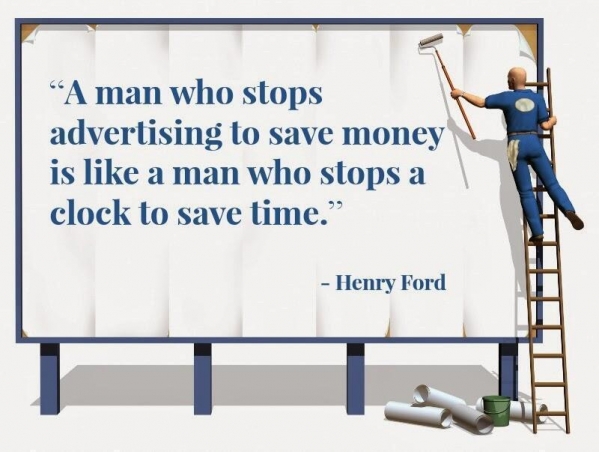
The companies that rated best for effective marketing, according to a recent Gartner study, were the ones that spent the most time understanding their customers. Businesses that are introspective and fearful of action will lose sales to those actively talking to customers and prospects.
How do you guarantee marketing success?
Jan-Patrick Schmitz, CEO of Montblanc North America, says "it obviously starts with the CEO. If he or she doesn’t understand that the business is about the customer and not operations, the CMO is going to have an uphill battle. Understanding your customer is about understanding what your business is and what your business will grow into.”
It's not a lottery, once you understand what customers want from your product or service, marketers that advocate for the customer in the boardroom will win.
Get the message right, then the risks are reduced irrespective of the mediums you then try. If you do understand your customers true needs and what they value most, and built your offer to satisfy those desires, it's time to check out the latest ways to advertise and connect.
Read MoreAussie business struggles, time for a creative way out


Will our kids ever be able to afford to buy a house? Can they even afford to rent? Here in Woolloomooloo 2 bed flats start at $1,000 a week, unfurnished! Unemployment is on the way up, mining investment on the way down. Coles and Woolies continue to squeeze farmers and FMCG brands while bricks and mortar retail is flat.
The big 4 banks are making record profits on higher margins than ever. If you are a small to medium business they probably won't give you a loan. 20 years ago 75% of bank lending was to business, now 75% goes to funding ballooning house prices.
This chart shows the decline in business investment post GFC
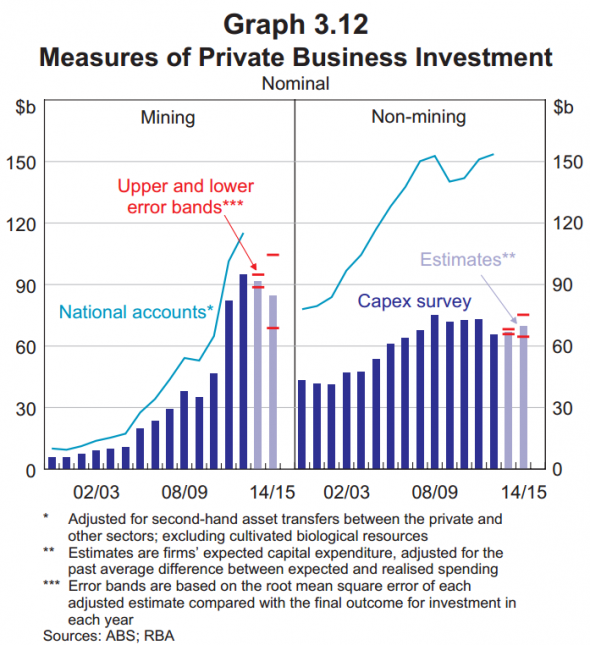
If businesses aren't investing in themselves, how can they grow let alone survive as the Internet destroys traditional business models?
Most managers have spent the last 6 years cutting and seeking efficiencies, hoping if they hang on long enough the market will recover. While local businesses seem to think it's conditions that are tough, World Bank figures show the world is booming – output was up $US75 trillion last year, which is about 20 per cent higher than the pre-GFC peak. 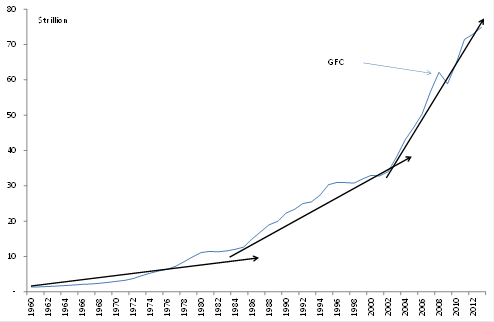
The world is moving on
Australians need to look outwards and recognise there isn't going to be a return to the way things were, the new reality is more rapid change and creative destruction. I use the word creative discerningly. It's the best way to describe the increasingly global competitive situation most businesses are struggling to get their heads around.
Historically change came slowly and could be managed by gradual adjustments of pricing, distribution or inputs. Not any more.
Enabled by the Internet, we now have Google replacing entire distribution channels with a search box. The Cloud has enabled brands such as Xero to offer with a lower cost and better service to leapfrog long established businesses like MYOB that relied on annual software upgrades. Social media has empowered determined consumers to "out" entrenched self-serving business practices, just look at CommBank's conflicted financial advice scandal that could cost it over $100million. (Or ANZ's Timbercorp scam and Macquarie's financial planners rort.)
These are all examples of a new business environment. New challenges require new thinking. A survey of over 300,0000 managers published by Harvard Business Review shows both CEOs and the next 3 levels of management aren't equipped to think outside the square.
The most important skills as rated by managers
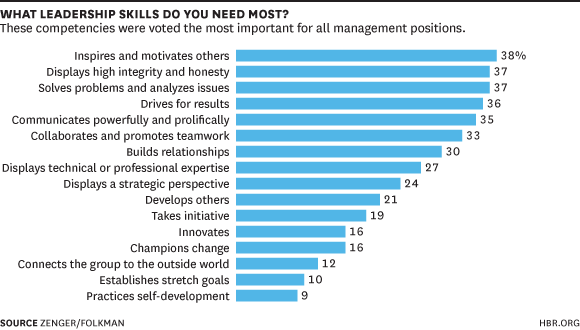
Perhaps the skills that are most needed today to deal with the rapid pace of change are the ones required to find creative ways to refresh and relaunch a business. Yet the survey found these are the least valued by management. Can you imagine how the people behind some of Australia's most successful businesses would rank themselves for the skills on the list? Like the young pair behind Atlassian, ten years ago a start up now worth $3.5billion. Or Boost Juice, Cochlear or Challenger, Seek or Xero. How important to their success are the more creative skills most managers in the survey dismiss?
Creative thinking skills
Innovates
Champions change
Connects the group to the outside world
Establishes stretch goals
Practices self-development
You may be interested to see evidence of how creative thinking adds value in this time of digital disruption. UNO helps challenger brands grow by encouraging and mentoring these creative skills that most managers have underutilised. Download our formula for growing challenger brands here.
UNO's one time client at Choice Christopher Zinn explains more on the new influence of the determined consumer.
Read MoreWant to see where marketing is headed?

Technology is changing everything in our world. Marketing isn't just following the trends, today marketers are actually more likely to be using new technologies to drive change within businesses than the IT department.
I wrote recently that Gartner has found the average CMO now spends more on IT than the CIO. It's all about understanding what the customer wants, then finding what technology can now do to give it to them.
Big Data driven future for marketers
Here is a chart I came across that helps explain where we are today and where we are heading. Sooner rather than later.
Just click for a bigger view of the future of marketing.
Read MoreWant a strong brand? Here's one we prepared earlier
What's in a brand name?
Money in the bank if you choose the right one, or an uphill battle and wasted dollars if you get it wrong.
Your business is your baby, and just like your first child, choosing a name can be fraught. Rather than show stats or a share a list of "most popular brand names of 2014" or cherry picked research to explain the pros and cons of what makes a good brand, I'm going to share 30+ years of trial and error and what it's shown me actually works in the real world. Not just what sounds good when shared with your spouse when working through the choices lying in bed late at night.
How a brand name change delievered a 3000% return
City Mutual had been around for over 100 years, yet onlythan 2 in 100 Australians recognised it. Three years later it was the best known investment and insurance group after AMP, having changed it's name to Capita.
Buying IBM means you won't get fired
Managers for decades have filled tenders, often at higher prices, knowing the board would never question the decision. Every time a client comes to me saying they want to call their business a series of initials they quickly use IBM as an example of why it will work. You can forgive their missunderstanding of what makes a brand. Unless your over 100 years of age you would necessarily know International Business Machines gained it's reputation for deivering reliable and ofte leading edge typewriters and for fifty years before it abreviated it's name to the initials that sat kneatly in the corner of millions of machines in office desks around the world. Today they business is in consulting, so Business Machines wouldn't be apt.
How to make a splash
Local businesses need to think of global consequences
When IFX Markets, a UK listed financial services business wanted to test market a business model in Australia for global roll out, the question of the right name came up very early in discussions.
Read MoreHave Aussies forgotten how to make things?


If you're anything like me, you enjoy a weekend trip to Bunnings. Today there are more things to buy than ever, for less than when our fathers took us to the local hardware decades ago. Where once tools and taps and barrows and bolts were manufactured in Australia, most of this stuff is made in China.
Most of us would agree Australia's manufacturing sector has been destroyed by cheap Chinese imports. What hope is there for Australian made? With the help of some lateral thinking, maybe more than most think.
The end of the made in China boom?
Robert Gottliebsen reports China's remarkable gains in productivity and standards of living were all achieved with borrowed capital and technology. Alan Greenspan points out that no Chinese companies feature on the annual lists of the world's most innovative companies -- nearly half of those lists are made up of American companies. This is leading to a narrowing productivity gap between China and the US, which is putting serious pressure on the Chinese economy.
That's right, don't underestimate the power of first world creative thinking when matched against the cheap cost of third world manual labour. Here are a couple of examples from my dealings over the last year.
Australia leads the world in compression fabric design
 I remember twenty years ago most Australian clothing manufacturers closed their local factories and set up workshops in Fiji where labour was cheap. Now most clothes sold here, even in stores like Zara, are made in China or Pakistan by one suspects slave labour. Yet in some areas of fashion we continue to lead the world.
I remember twenty years ago most Australian clothing manufacturers closed their local factories and set up workshops in Fiji where labour was cheap. Now most clothes sold here, even in stores like Zara, are made in China or Pakistan by one suspects slave labour. Yet in some areas of fashion we continue to lead the world.
Our client Quick Response is a local family business of almost 20 years who are still designing and making swimwear and compression garments locally. What's more, they manufacture using Australian made fabric.
In fact Australian compression fabric is the most technologically advanced in the world. It's the result of research and innovation that over the years has been tried and tested by our champion swimmers in those body hugging suits.
UNO have built an e-commerce site so you can buy the world's-best QRS compression garments direct, for less than sports brands that are usually made in China and Indonesian from inferior fabric.
Still open: a local manufacturer of timber shutters
Thirteen years ago Open Shutters was one of UNO's foundation clients. While cheap Chinese shutters have decimated most local manufacturers, Open continue to do business by concentrating on innovation. An obsession with quality design, investing in advanced machinery and only using sustainable timbers continues set them apart.
While white paint may disguise the compromises of Chinese made shutters in the short term, having been in the market now for several years they are proving to peel, bow, crack and break. The fact Open's product is built to last sees them gaining repeat sales over two decades on. What really makes the biggest difference is the way Open think: 
What truly lifts them to the top of their category in the world is the design thinking process they apply in everything they do. When suppliers tell local architects or designers their ideas aren't possible, Open finds a creative way to deliver.
Could robots save Australian manufacturing
If you still doubt the power of creative thinking over cheap labour, consider this. Last year McKinsey released a list of the things that would change the business world. Near the top of the list was advanced robotics: robots with better and better senses, dexterity and intelligence that can automate tasks or help humans or even operate on us more effectively than... humans.
To quote the numbers:
• 170%: growth in sales of industrial robots 2009-2011,
• 320 million: manufacturing workers (12% of global workforce), and
• $2-3 million: cost of the 250 million annual major surgeries.
Here's what robots could do:
"Advances could make it practical to substitute robots for human labor in more manufacturing tasks, as well as in a growing number of service jobs, such as cleaning and maintenance. This technology could also enable new types of surgical robots."
Closer to home, when I underwent keyhole surgery a few months back, I could have chosen to be operated on by a robot designed in the US for remote controlled surgery on the battlefield. My gap cover wasn't enough to cover the extra cost, but the cost gap will quickly close. It's another reminder the changes in our lives will more likely be shaped by innovation than the global oversupply of cheap labour.
If you are a manufacturer the message is clear, forget cost cutting, start thinking and get marketing.
Read more on how to rethink your business.
Read MorePerception or Reality? Customers now decide


Over 50% of people don’t trust financial advisers. So I was told on the news last night. If you have ever been to see an advisor you’ve probably come away with the perception that they aren’t telling you everything straight. Commbank’s multi-million dollar financial planning scandal has proved perception IS reality when it comes to advisors.
For decades when a business advertises a product, whether baked beans or an investment, the words and claims made are open to scrutiny and have to be THE TRUTH. You have to deliver on the promise or you are liable under a number of ad standards, ASIC and ACCC rules. If you sell a financial product face-to-face most of these rules don’t seem to apply or be enforced.
Big 4 Banks still traditional marketers
What the big 4 banks and AMP have got away with is a classic exercise in traditional marketing methodology – control the distribution channel and you control both pricing and product. By using different brands they have been able to sell the same products to an unsuspecting public. Most people haven't realised 80% of advisors work for groups owned or aligned with just 5 product providers.
Most people think they are seeking financial advice, when what they are getting is a sales pitch. How can anyone be given genuine choice when of 18,000 advisors only 31 are truly independent? We’ve all been buying Home Brand super for years and haven’t known it. Here is a list of just some of the hundreds of “brands” just 5 providers have sold their own products under:
Cavendish AMP
Charter Financial Planning AMP
Garrisons AMP
Genesys AMP
Hillross Financial Planning AMP
Ipac AMP
Avanteos Commonwealth Bank
Colonial First State Commonwealth Bank
Commonwealth Financial Planning Commonwealth Bank
Count Financial Commonwealth Bank
Financial Wisdom Commonwealth Bank
Witaker McNaught Commonwealth Bank
Apogee NAB
Garvan Financial Planning NAB
Godfrey Pembroke NAB
Lend Lease Financial Planning NAB
Meritum Financial NAB
MLC NAB
Elders Financial Planning ANZ
Financial Services Partners ANZ
Millenium3 ANZ
OnePath ANZ
RI Advice (RetireInvest) ANZ
Sentry ANZ
Asgard Westpac
BT Westpac
Pact Accountants Investment Group Westpac
KPMG Financial Planning Westpac
Securitor Financial Group Westpac
A couple of rogue CommBank advisors who ripped off investors for millions is just the tip of the iceberg of poor brand values. Ian Narev says the business won’t suffer. I suggest the era of brand equity built upon decades of million dollar perception-shaping advertising is over. The Internet has democratised the share of mind of customers. Does Narev not understand this? Instead of changing his business model he returned from holidays to push the button on a million+ dollar ad campaign trying to reassure customers they are fixing things. This old school reaction won't preserve brand equity long term. Here’s proof.
Try Googling CommBank financial planner. This is the result I got:
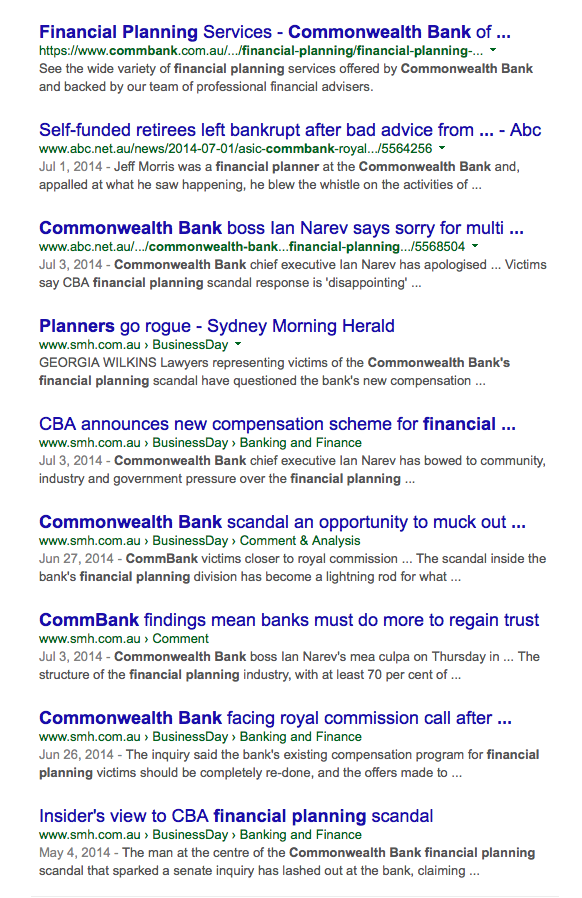
Last week we saw the government roll back the FoFA laws that were supposed to make hidden and trailing commissions illegal. Despite some wordy amendments from Clive Palmer, there is still no ironclad law that insists advisors can’t sell you a product because they get a kickback, not because it’s the very best choice for you.
Challenger brands will win with customer centric marketing
Legislation may not stop the consumer unfriendly practices of big banks. Social media and the empowered consumer will. And new technologies will see challenger brands that build financial product and service offers around what customers actually want will grow at their expense. Coles new deal with GE Capital to offer loans is just the start. I'll leave the last word to a consumer active on social media:
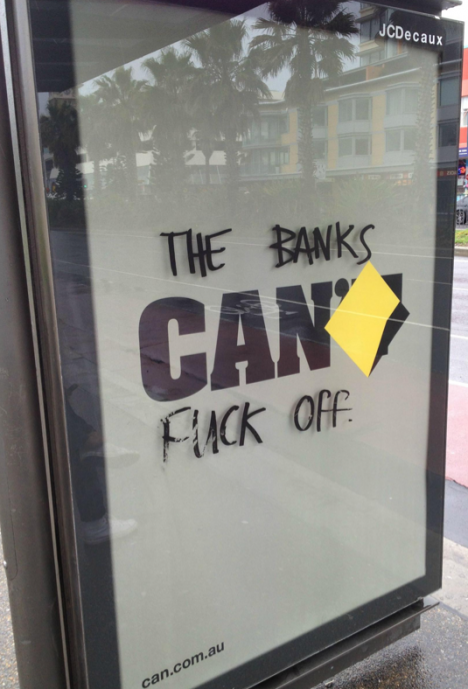
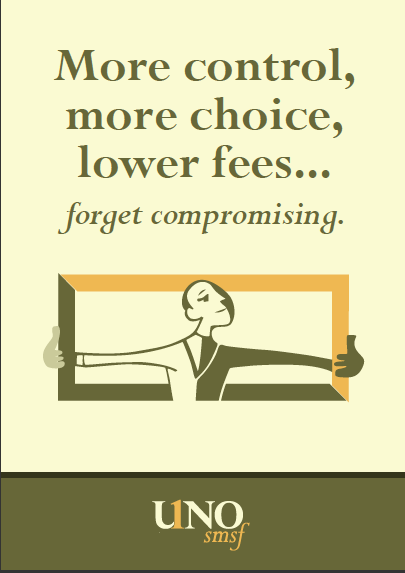
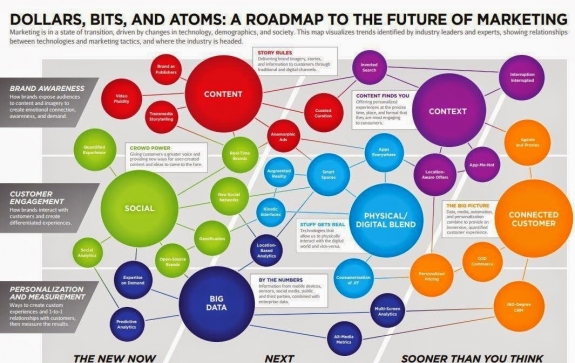



Scan the QR code for our contact details.
Download the Neoreader app.
© COPYRIGHT 2013 UNO marcomms Privacy